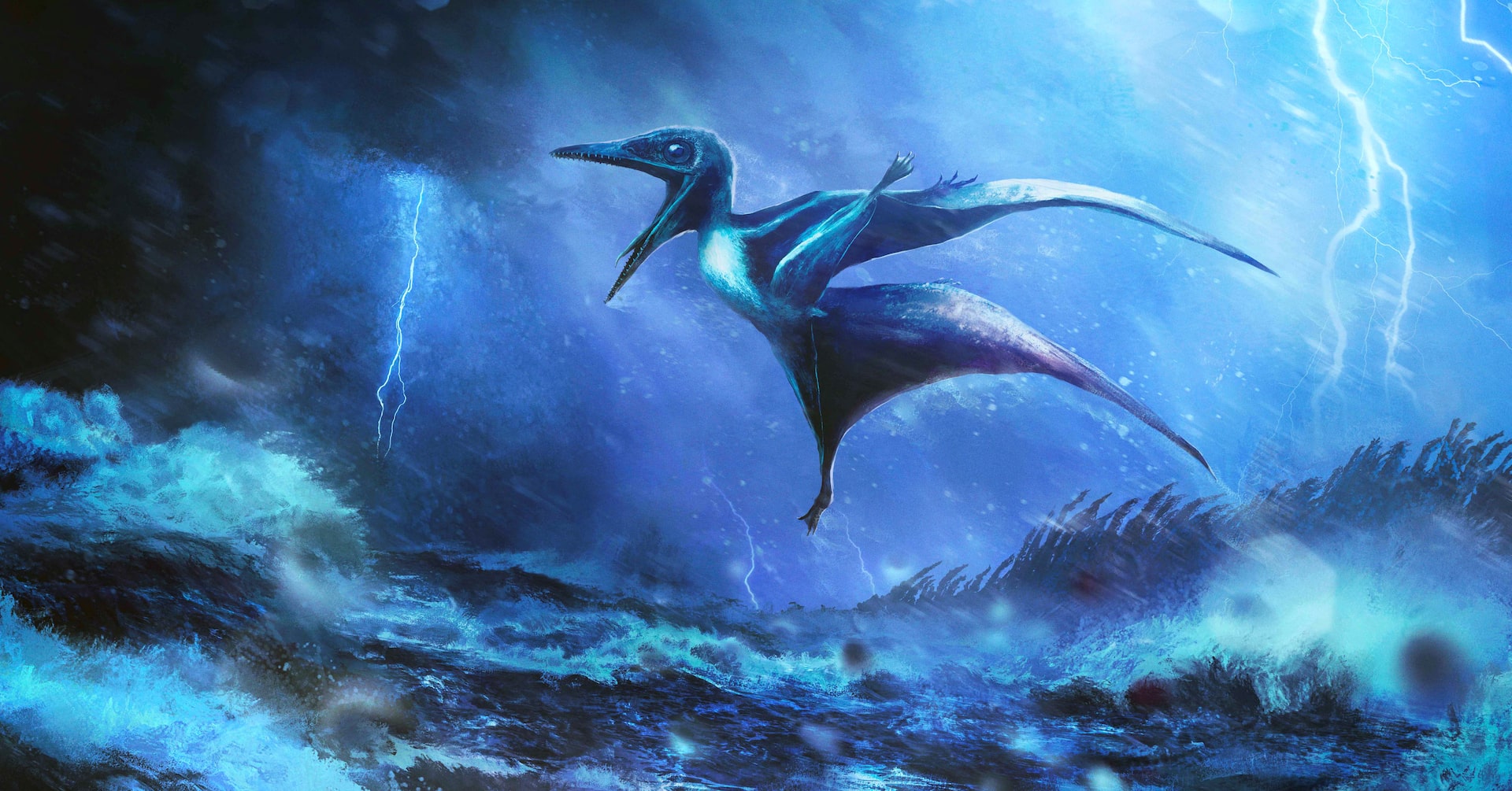
Sept 19 (Reuters) – A tropical storm was brewing over a chain of islands on the edge of the vast Tethys Ocean – the ancient predecessor to the Indian Ocean and Mediterranean Sea – one day roughly 150 million years ago, and a baby pterosaur was caught in the powerful winds.
The tiny flying reptile hatchling already was capable of flight even at its tender age, but this storm was too much. The wind snapped the humerus, the upper arm bone that helped support its membranous wing, and flung the helpless animal into a lagoon, where it drowned and was covered by churning mud.
Sign up here.
Scientists said they found the exact same apparent wind-caused fracture while conducting the equivalent of postmortem examinations on well-preserved fossils of two baby Pterodactylus individuals unearthed years ago in separate locales in the southern German state of Bavaria. The fossils, of slightly different ages, were stored in two museum collections.
The researchers nicknamed the two hatchlings Lucky and Lucky II. It was bad luck for them to have been doomed by storms, but good luck for science that paleontologists have been able to learn from their fossils about the anatomy of young pterosaurs and the drama of life during the Jurassic Period.
Pterosaurs, cousins of the dinosaurs, were the first vertebrates to achieve powered flight, followed later by birds and bats. Pterodactylus was the first pterosaur described by science in 1784. Fossils of more than 50 individuals of various sizes have been discovered.
The two in the new study were extremely young when they died, probably only a few days to weeks old. They were tiny, with wingspans of less than eight inches (20 cm), “small enough to sit in the palm of your hand,” Smyth said.
“Their bones were still quite delicate and not fully formed, which is one of the clues that shows how young they were,” added Smyth, who worked on the study while at the University of Leicester in England.
The fossils offered clues about how they died.
“The key evidence comes from the injuries preserved in their fossils. In both animals, the upper arm bone was broken in a diagonal split along the shaft. This kind of injury is unusual because it doesn’t look like the result of a crash, a fall or an attack by a predator. Instead, it suggests the wing was bent under tremendous pressure, likely from strong winds or waves during the storm,” Smyth said.
“We can imagine a few possibilities for what the hatchlings might have been doing before the storm struck. They could have been practicing flight, hunting for insects and other small invertebrates, or even sleeping on the islands. When the storm hit, weighing only a few grams, they would have had almost no chance against the ferocious winds,” Smyth said. The storm likely carried them a long distance, perhaps several miles (km), from their original habitat and into the lagoon.
“While a broken wing alone probably would not have been immediately fatal, the fact that they sank quickly to the bottom suggests they inhaled water and drowned. They were then rapidly buried in the fine sediments of the storm beds. The oxygen-poor conditions protected their delicate bodies from scavengers, and their bones were preserved in life-like positions, providing an extraordinary snapshot of their final moments in the fossil record,” Smyth said.
Pterodactylus was a relatively small pterosaur, with the adult wingspan at about three feet (one meter). They possessed relatively short and broad wings, a lightly built body and a long, pointed beak lined with small, conical teeth.
“Even as hatchlings, they already had the same basic wing structure as the adults, which means they were probably capable of powered flight very early in life and lived as small, independent fliers rather than relying on their parents,” Smyth said.
The fossils provide a peek into Jurassic life.
“It’s easy to imagine the prehistoric world as just a stage for giant animals to stomp across, but these environments were as changeable and challenging as ours are today. In this age of giants, most animals were small, including tiny creatures like these Pterodactylus hatchlings, each navigating daily hazards,” Smyth said.
The fossils, Smyth said, “give us a rare glimpse into the fragility of life for the smallest creatures, making their story that much more poignant.”
Reporting by Will Dunham in Washington; Editing by Daniel Wallis



